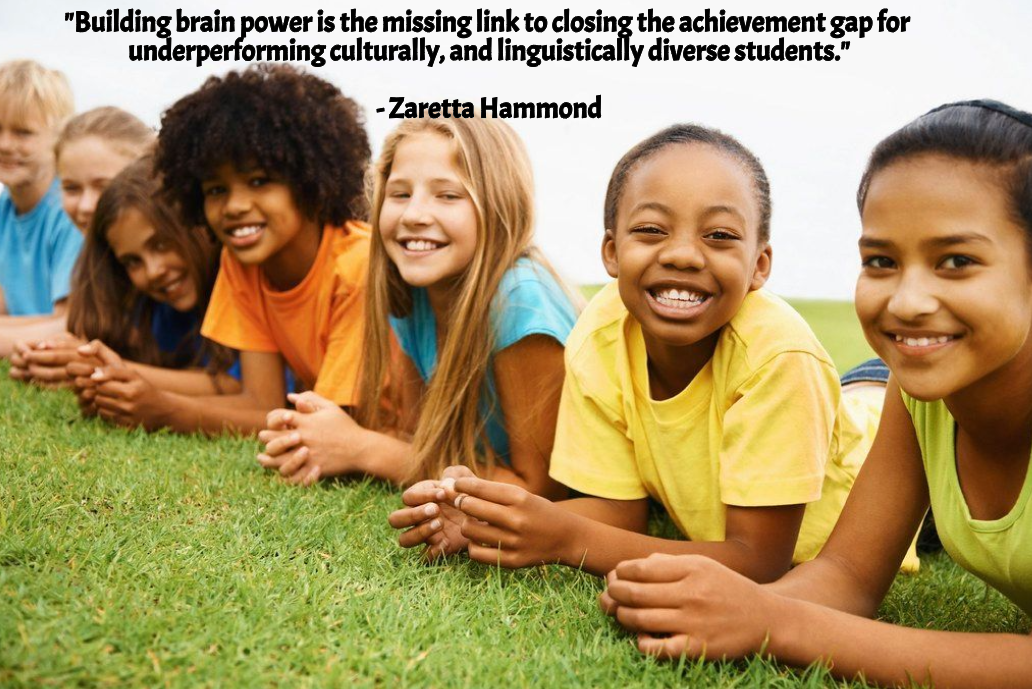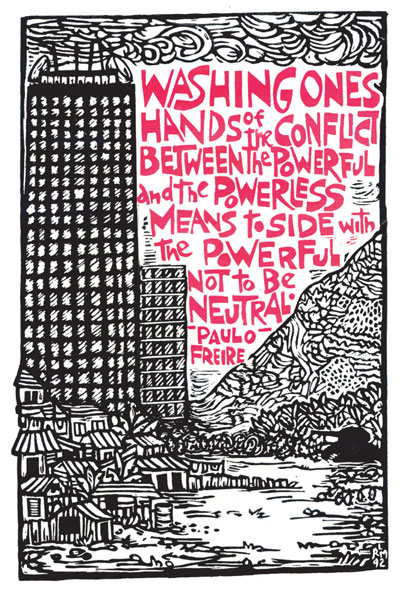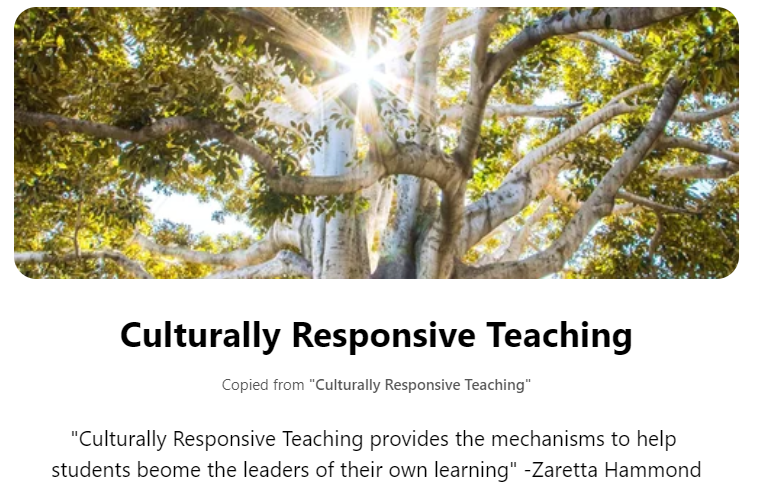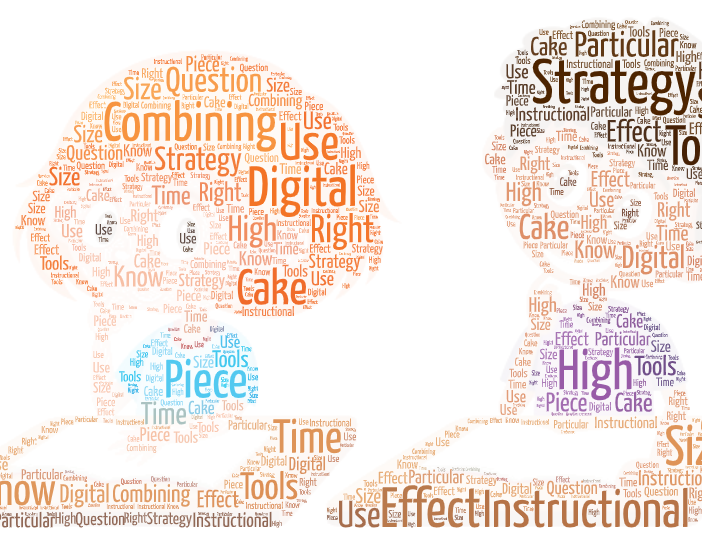What do students of color need in classrooms? Zaretta Hammond shares ideas in her book, “Culturally Responsive Teaching and the Brain.” Let’s take a look at the teacher expectations Hammonds shares. One way to view these expectations is through the lens of high-effect size strategies. John Hattie leads the charge in his research and identifies which strategies work. His focus is on cataloging research about what accelerates student growth. I will also make reference to other authors who have long identified issues with how schools are set up to disempower the disenfranchised.

Culturally Responsive Teaching and the Brain
When I first read Hammond’s book, I found myself amazed at the connections she makes. As a bilingual/ESL educator, I immediately saw culture and schema connections. Hammond puts dominant culture on notice in her book. We end up doing children a disservice when we ignore the power of culture. That’s because culture is what disempowered children bring to school with them. It’s their prior knowledge, their schema.
Her ideas about children’s schema align with education experts Robert Marzano and Frank Smith. What’s more, Hammonds’ explanation of how the brain works grounds her work in culturally responsive teaching. What I found most interesting is how well her work aligns with the work of John Hattie. As I read Chapter Six of her book, I found myself seeing the influence of high-effect size strategies. Let’s take a look at some of these connections between Hattie and Hammond.
Cultivate Self-Determination
Hammond explains that teachers fall into several potential camps. One of the roles teachers can play is that of a student ally. The role of the ally is to build a relationship of mutual support. This relationship empowers “marginalized students to increase their intellective capacity.” Without intellective capacity, schools offer a domesticating education steeped in the status quo.
Patrick Finn writes the following in his book “Literacy with an Attitude:”
“First, there is empowering education, which leads to powerful literacy, the kind of literacy that leads to positions of power and authority.
Second, there is domesticating education, which leads to functional literacy, literacy that makes a person productive and dependable but not troublesome.
Over time, political, social and economic forces have brought us to a place where the working class (and to a surprising degree, the middle class) gets domesticating education and functional literacy, and the rich get empower education and powerful literacy.
We don’t worry about a literate working class because the kind of literacy they get doesn’t make them dangerous.”
Marginalized students need intellective capacity. Why? Hammond says it’s because they have long internalized negative messages. These messages pertain to their ability to do well in school. Inequities form around their under-developed “learn how to learn skills.” What else plays a part? Hammond suggests weak foundational skills in reading and analytical writing.

Moving Towards an Empowering Education
What’s more, a domesticating education permeates the culture of school. It even influences how teachers set up technology use for students:
“Economically disadvantaged students, who often use the computer for remediation and basic skills, learn to do what the computer tells them, while more affluent students, who use it to learn programming and tool applications, learn to tell the computer what to do.
Those who cannot claim computers as their own tool for exploring the world never grasp the power of technology. They are controlled by technology as adults–just as drill-and-practice routines controlled them as students.”
Toward Digital Equity: Bridging the Divide in Education
To overcome domesticating education, Hammond has a suggestion. That suggestion is that teachers work as student allies. Their mission? Cultivate student growth and self-determination.
“Education either functions as an instrument which is used to facilitate integration of the younger generation into the logic of the present system and bring about conformity OR it becomes the practice of freedom, the means by which men and women deal critically and creatively with reality and discover how to participate in the transformation of their world.”
Pedagogy of the Oppressed
Hammond makes several suggestions. Here are a few that were easy to connect to Hattie’s work. Relying on high-effect size instructional strategies is one way to empower students. They are a way to build intellective capacity.
Student Growth Cultivators
In their role as allies, Hammond says that teachers must offer students the following. To each point she makes, I’ve blended in John Hattie’s instructional strategies. Do you agree with the connections made?
Note: Chapter 6 of Zaretta Hammond’s book is the source quoted below. The John Hattie strategies come from the Visible Learning MetaX database. ZH=Zaretta Hammond; JH=John Hattie.
Talking about Learning
ZH: “Kid-friendly vocabulary for talking about learning moves.”
JH: Success Criteria (d=0.88) and Self-Reported Grades (d=1.33)
Students need to be able to own the language around their academic growth. To do that, students must put concepts focused on data, progress, and assessment in their own words. Hammond says that this is where teachers can assist students. Hattie makes similar ideas popular with success criteria. One key component of success criteria involves co-constructing these brief standard summaries.
What’s more, students are able to self-assess the quality of their own work or their level of mastery. Self-Reported Grades puts tracking progress in students’ hands. Knowing how close or far they are to meeting a learning objective gives students agency over their own learning.
Checklists and Graphing
ZH: “Checklists to help hone decision-making skills. They assist students during learning and focus their attention during data analysis.”
JH: Success Criteria (d=0.88) and Metacognition (d=0.60)
One of the challenges Hammond highlights includes encouraging student reliance on checklists. The purpose of checklists is to empower novice learners to escape the constraints they face. These constraints plague novice writers. Yet, they capture some of the challenges faced by all students. That is, having quick access to relevant knowledge and overcoming task demands (source). To address that, checklists provide relevant knowledge at the point of need.
While you might think this is about writing programs strategy, it’s not. Rather, it’s about Success Criteria:
Teachers use checklists, rubrics, and worked examples for, “demonstrating to students what success looks like and thus what the goal could be for their own learning” (Hattie, 2009, p. 172). They teach students how to use rubrics and checklists to reflect on what
they do well and how they can improve. Through self-questioning, self-verbalizing, and self-reported grades students learn to establish concrete learning goal; learning becomes more personalized and engaging. Such practices empower students thereby helping them to grow positive self-concepts. (source)
Tools such as graph paper and spreadsheets allow students to track their own progress. What’s more, they foster metacognition:
…checklists can help students develop metacognitive awareness of their intellectual processes. Metacognitive research suggests that students who can do the follow are better learners:
- know how to learn
- know which strategies are most effective when faced with a problem or a task, and
- have accurate methods of assessing their progress
Students should get “practice engaging in metacognitive conversations about learning and strategy,” says Zaretta Hammond.
The Power of Metacognition
Metacognition (d=0.60), reflecting on one’s own growth, can accelerate student learning. Metacognition also plays into Self-Regulation (d=0.54). Checklists and self-regulation’s metacognition play well together. Consider the metacognitive aspect of Self-Regulation, the third aspect below:
- Motivation to solve a problem
- Cognition to think through the problem, and
- Metacognition to review whether they are performing the task in a correct manner. This last point is where checklists come into play.
A final point that Zaretta Hammond makes is that students must engage in reflection. She recommends students not only “practice metacognitive conversations,” but also set up time for reflection. Reflection must include reviewing the following:
- self-assessment data
- debriefing circles
- provide usable, actionable feedback
Explore self-judgment and reflection as an aspect of metacognition in this blog entry.
Additional Resources
Want to learn more about Zaretta Hammond’s work? You may find this Wakelet collection I prepared useful.

- Visible Learning MetaX Database
- Zaretta Hammond’s Blog
- About Paulo Freire’s Pedagogy of the Oppressed
- Understanding Paulo Freire’s Pedagogy of the Oppressed
- Reflection on Literacy with an Attitude
- Nurture Human Talents
Feature Image Source
Created by author


2 comments
Culturally responsive teaching is an important aspect of teaching.
I like the idea of using checklists to help students develop metacognitive awareness